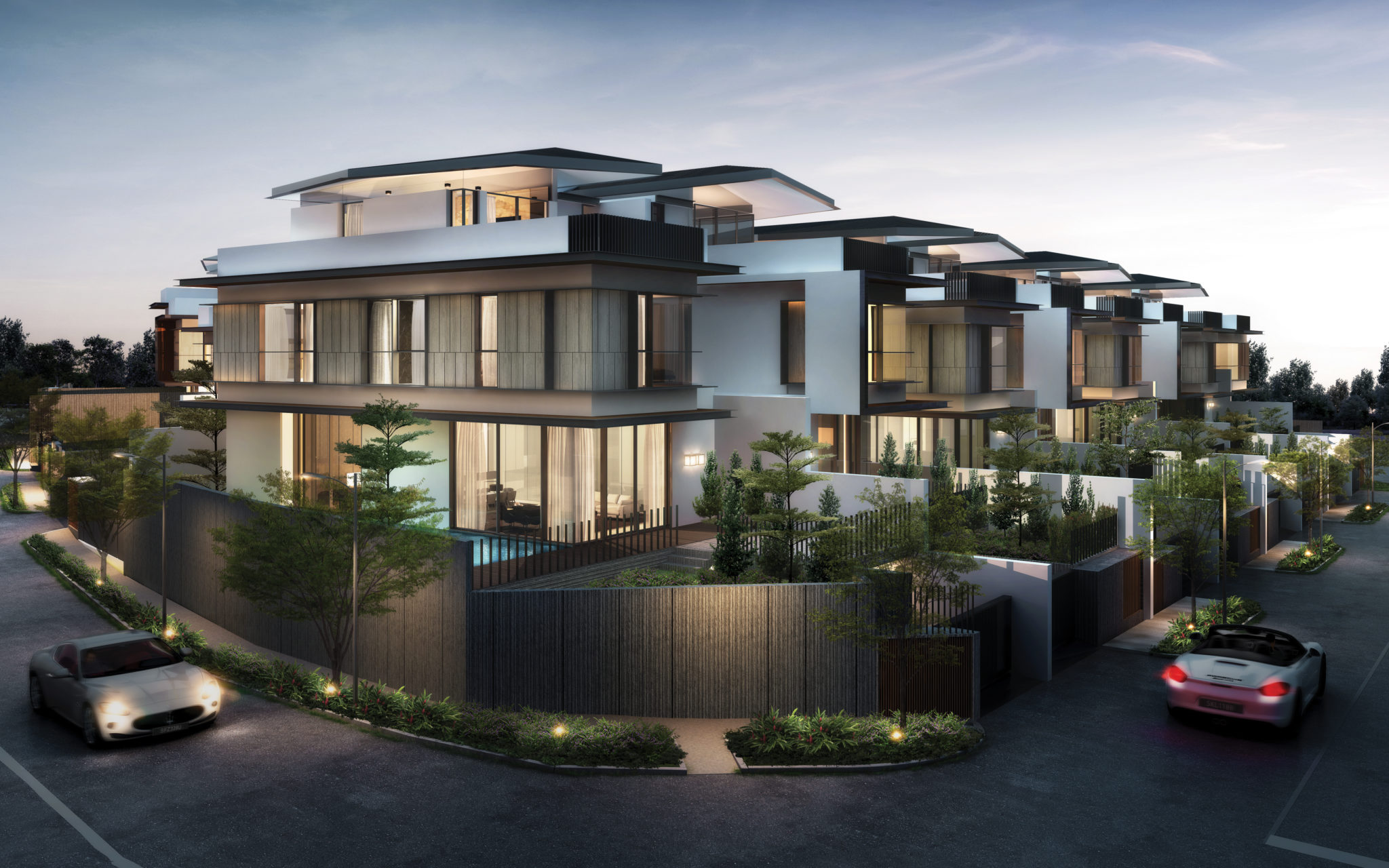East or West, Home is the best. Everybody loves to be in their homes and enjoy their quality time with their loved ones. To have a peaceful living, the house must be up to their satisfaction and expectation. At the end of the construction, most of the times people not satisfy with the outcome of what they desired to build. Sometimes, the misunderstanding arises between the architecture and the landowner. These shortcomings can be overcome with high precision technology that is now emerging as a new trend.
The photorealistic architectural rendering makes it easier and more liable to you. It gives you the crystal clear idea of what the architecture has designed a model for you. It lowers the situation of getting misunderstood of ideas between them. This article gives you more insights into this rendering technique and the possible ways to understand the newly developed technology. If you want to know how photorealistic rendering can boost sales, you can read up our previous article.
What is Rendering?
Rendering is a process used to create a photorealistic model of a building plan in 2-dimensional or in 3-dimensional images through the computer programs. The final output display also called the render. This file contains the options to modify such as shading, lighting, texture, and geometry. These given data will process through a rendering program, come out with a digital image. It is said to be the branch of Pictorial Arts. Showing the plan of a building such as how the building will look like before it has been completed.
To perform complex rendering calculations, GPU, purpose-built a device to assist the CPU. In 3D computer graphics, rendering is the major sub-topics. Also, it associates with several other topics in computer applications. When the computer graphics got its prominence during the 1970s, it has also gained its importance. Rendering is impeccably engineered along with the mixture of a few fields like mathematics, visual perception, software development, and light physics. Almost, the real-time rendering is always a key function to all the 3D video games. Always with appealing and attractive 3-dimensional images which amuse the gamer.
Tracing the History of the Photorealistic Architectural Rendering
It all started a way back, around 1415 when Brunelleschi inculcated the drawing perspective. From there, the architectural visualization got its rise with more imagination. E.g. all the walls were clean and with the perfect lighting. The people found it very peaceful to live in there. The watercolor painting, John Soane’s Bank of England by Joseph Michael Gandy is one of the most popular examples. It deviates it has deviated from the realistic portrayal and showcased in the Royal Academy in 1830.
This visualization portrayed the ruins of buildings in the future. It is also said to be created upon the inspiration of the paintings of the ruins of the ancient Rome by Piranesi. Cenotaph of Newton was drawn by Boullée in 1784. Considering to be the holy testament for the later architects. They took it as a great guide to make their own perfect model for a building. Together with all the suitable lighting and shadings to a particular building structure.
 A new era for architectural rendering
A new era for architectural rendering
A drastic move has happened in the 1920s. This move was led by Bauhaus, changed it totally from the human visualization point of view to the axonometric depictions. This Bauhaus method made the architects to objectify the buildings and a way to dissect it to add more facilities. This eventually became an inspiration at the international level and also to the great architect like Le Corbusier. Further, the photography, juxtaposition of images and colleges were used by the architects during 1960s. Furthermore, the realistic portrayal was distanced in the 1980s and 1990s by Peter Eisenman and Zaha Hadid. They called it deconstructionists with their procedural portrays. Throughout the history of architectural visualization, the architects have been inspired by various methods used by the significant figures. Even, the architecture students taught more with graphical designing rather than their architectural designs. Thus, emerged the term, photorealistic architectural rendering in the field.
Techniques to learn in Photorealistic Architectural Rendering
* The Blending Rendering is the most favorite techniques for all the designers out there. Because it gives the liberty to mix colors and create own aesthetic designs. For the application, the architects use alcohol-based or water-based or pigment based colors to portray their ideas. Among them, the artists use water-based colors for the easy application.
* Patch Pattern Rendering common used with various polygons in different colors and different sizes. This is one of the most attractive designs that used mostly in graphic representations. The abstract paintings usually design and create via patch rendering. The modern art fraternity fascinates the arrangement of monochromatic patches arranged with a certain harmony and rhythm.
* Linear Pattern Rendering technique often use to depict the model with just drawing lines. You can add more details and depths by using the different size of lines and show the difference of areas. The most important part is to draw lines with different thickness and with different tones. It should make a difference of area.
* Monochrome Rendering technique, as the word suggests, it portrays with a single color. A single color with hue variations employ to bring out the soul idea of the plan. It is not much less attractive if you compare to the one using more colors. All depend upon the viewer’s perception.
These techniques will help to create the photorealistic architectural rendering more appealing obviously. Also, it is easier for people to understand. These techniques form the basis for the artists to bring out their own plans. The ideas suitable for the building respective of its underground and background for it to build.
Primary types of 3D architectural renderings
There are various types of 3D photorealistic architectural rendering available depending upon the preferences of each person. The possibility of inviting efficient buyers inside the property through the real state owners is possible by the interior 3D renderings. This rendering is helpful to experience an authentic space as the rendering allows the reflection to provide lighting, color, and texture within the space. Moreover, different furniture and fixtures can also be experienced in a room through the interior 3D renderings. The 3D renderings can also be used in the landscape architect to imagine the different designs of foliage, paths and other traits for a yard. On the other hand, the builders and the city developers can able to imagine the blending of a new structure with the existing one or the one fit into development via the exterior 3D renderings. The major types of 3D architectural renderings are given as follows.
1. Interior
The interior 3D renderings are very useful for the real estate agents to help the customers and efficient buyers to imagine the inside of an apartment or villa. It places the vantage point inside the room. One of the salient features of the 3D interior renderings is that it showcases the accurate representation of shadow, light, and color inside the space of truly a photorealistic architectural rendering. Further, it helps to display any variety of furniture and features which best fits the buyers and clients. The best of the 3D interior renderings is that it highlights even the detailed elements of a design such as a wall or paneling textures whereas the 2D interior drawings merely provide the sense of the inside of space. Thus, the clients are able to visualize living in space before they buy it through the effect of the 3D interior renderings.
2. Exterior
The exterior 3D photorealistic architectural renderings are of complete contrast of the interior architectural design as the exterior renderings are that have a vantage outside the building or structure. The exterior renderings can be either of a simple model or of a full of realistic elements such as streets, foliage, trees, fences or even people. For both the new construction proposing architects and builders, the exterior renderings are perfect aid. In order to offer the best sense of locality, the surrounding settings of the location can add to the exterior renderings.
3. Aerial
Similar to the exterior renderings, this type of renderings focuses on the outside of the building but to add the indifference, the aerial type of renderings displays the structure or the building form or above the building. Also, the aerial renderings comprise more of the surrounding properties in comparison with the primary exterior 3D renderings. Most exclusively, the aerial type of 3D renderings comes of greater aid to visualize the blending of a current existing building with the surrounding or the neighborhood’s design. The perfect orientation of a structure can be better visualized by the architects from viewing the site from above.
4. Floor Plan
The 3D floor plans are of very useful for marketing big level properties or higher-end substantial projects as it provides every detail and the depth of a floor which allows the effective buyers to imagine their furniture and themselves in space. Whereas, the traditional 2D floor plans despite being effective merely showcases the general layout of a structure to aid the clients to grasp the size and the orientation of space.
5. Animation
One of the exclusive features of the 3D architectural renderings is that the structure can make into a video format to help the potential buyer or client to experience the home and the surrounding site as a realistic visit. It is of greater use for the real estate buyers and the potential buyers as these photorealistic architectural rendering favor them to experience the inside of a home or a property without actually visiting it. Thus, the animation type of 3D architectural renderings enables the potential buyers to get a strong experience of the layout, features and the overall feel of a space. The video below is the showcase of architectural animation.
The striking benefits of architectural renderings
1. Quality of capture any angle
In terms of angle, the 2D architectural renderings carry some limitations whereas the photorealistic architectural rendering allow the structure to view from any different angle. Also, the 3D renderings are of greater use in terms of both back and front ends. Therefore, the architects and the designers able to visualize the space from every single angle. They can have a better understanding pertaining to the final look and the structure of space in a real sense. The 3D renderings prove to be the best when it comes to the advertising as the most striking traits and the features of a design will be displayed in many different angles for the buyers and the real estate clients.
2. Detects errors earlier
In the 3D rendering, the errors found and captured earlier with the provided ease of accuracy and visualization. Hence, any structural flaws with effective potential issues fix before any construction.
3. Enhances the communication
One of the significant factors about the 3D renderings is that it enhances better communication between the designers and clients as well as between the designers and architects.
4. Stand out in design accuracy
The photorealistic architectural rendering allow the architects and designers to test the structure model for accuracy in measurements. In the traditional renderings even with the precise measurements, the errors occurred and often mislead the overall structure
5. Provides ample space for adjustments
With the inclusion of benefits such as the reduction of cost and much more. The photorealistic architectural renderings allow the designs and the structure to modify ample adjustments in space.
Thus, with all the benefits and the quality of 3D renderings including the provided types, this type of advanced renderings possess a greater scope in featuring the photorealistic architectural rendering in comparison with the traditional and the 2D drawings.







